Being stuck in a room without windows isn’t great—but what if that room also lacks climate control? On days when the weather is warm, enclosed rooms like this can become so hot they are practically unbearable.
Maybe you work at a business or factory where some of the rooms or offices have this issue. Or perhaps you live in a northern area where air conditioning isn’t really a necessity—but there’s this one room in your home that you really wish had some AC.
Instead of sweating through the day, becoming miserable and unproductive, and possibly depressed, you need to take action. There are several ways to cool off a room like this, one of which is the installation of a portable air conditioner. You may have ruled out this possibility since there’s no window through which to vent the unit, but we’re here to tell you that you’ve got other options.
Can you install a portable air conditioner without a window? The answer is yes! However, if you don’t have some other way to vent it, the unit simply won’t work well. You’ll be spending money without reaping any of the cooling benefits—and in fact, the space may become even hotter. Find out how to vent a portable air conditioner without a window so you can enjoy a cooler atmosphere in the warmer, stuffier spaces of your home or business.
What Happens if the Portable Air Conditioner Isn’t Vented?
So what will actually happen if you don’t vent the portable air conditioner in some way, through a window or some other way?
An air conditioner essentially collects heat from the air. Once it has sucked that heat out of the room, the heat needs to go somewhere. Usually, it would be vented outdoors, through a window or some other opening. But if it isn’t vented, the air just recirculates back into the room you’re trying to cool.
Basically, the air conditioner will run like crazy, generating its own heat simply because of the electricity and energy it’s using, but it won’t accomplish anything. It will simply be adding more heat to the space. Plus, you’ll probably notice a higher humidity level due to the struggling AC unit, and that can make a space feel even hotter.
So it’s vital to vent the air conditioner in some way if you plan to benefit from it and achieve a cooler working or living space.
Vent Through an Exterior Wall
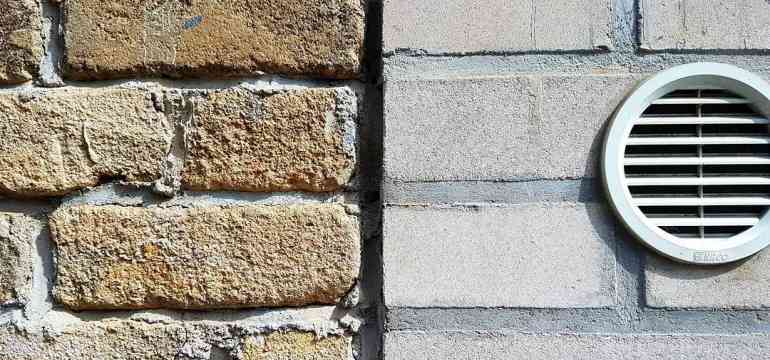
The first option is to vent the portable air conditioner through an exterior wall. If the room you’re attempting to cool has an exterior wall that leads directly outdoors, you can cut a hole in that wall, just large enough to provide adequate venting for all the hot air you’re sucking out of the interior space.
Before you start chopping holes in walls, it’s a good idea to review the building’s structural plans and details, as well as applying a stud-finder to locate any supporting studs or beams. You don’t want to weaken the building’s structure at all, and you also want to avoid cutting through pipes or wires that may be in place within the exterior wall.
Once you’ve located a spot that’s safe, one that won’t interfere with the building’s systems or structure, you can carefully cut the hole using a circular saw or a similar tool. Be very careful when cutting through brick, stone, siding, and other types of exterior material.
Place the AC unit right in front of the hole you’ve made, with its exhaust hose or vent passing through the opening you cut into the exterior wall. It’s important to make that opening no larger than necessary since you want to avoid having to pack in extra space with a lot of filler. Ideally, the hose should fit almost perfectly into the hole. If there’s a little gap, add insulation and then seal around the hose or vent with plenty of silicone caulk.
Include a protective vent cover or some other type of cover over the end of the AC unit hose, to prevent moisture and pests from getting in while still allowing hot air to escape.
Vent Through an Interior Wall

You can also vent a portable AC unit through an interior wall. Let’s assume that the windowless room you’re trying to cool down is near the center of the building and has no exterior walls. You could cut a hole through one of the interior walls and run the unit’s vent hose into that other room. So the unit will be sucking heat out of one room and pouring it into another.
Of course, that can be an issue, since the second room will then become much hotter. If the other room is a laundry room, utility room, storage area, or garage that isn’t used often, the extra heat may not be a problem. However, if it becomes an issue, you can always install a second portable air conditioning unit in that other room and vent it outside. That way, you’ll have a way to channel hot air all the way outside effectively.
If you find yourself installing portable AC units in multiple rooms within a home or business, it may be time to evaluate the building’s HVAC system as a whole. You may want to consider installing central air conditioning and climate control for the entire structure and all its rooms.
Vent Through the Ceiling
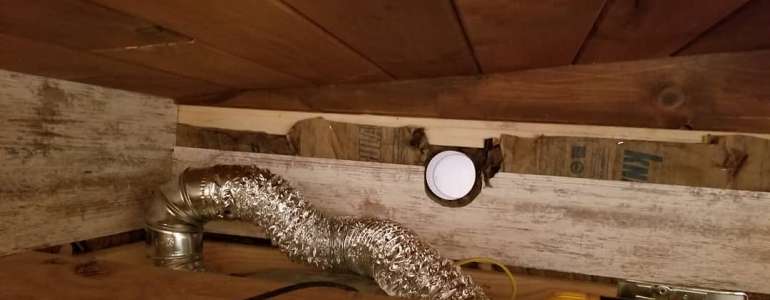
What if you can’t vent through a wall or window? In that case, you have another option—the ceiling. This option works particularly well if you have a drop ceiling, but it can work with other types of ceilings as well.
You’ll see this type of venting most often in rooms that house banks of computer servers. Computer servers generate a lot of excess heat, but they can’t be allowed to get too hot. Sometimes, if the central AC isn’t sufficient to ease the heat in the room, a portable AC unit can pick up the slack, and in these situations, a ceiling vent is often the answer to the problem of extracting the hot air and moving it elsewhere.
You’ll need to install the AC unit higher up in the room for this scenario, possibly on top of a sturdy metal shelving unit or bracket. Or you could elongate the vent hose so that the AC unit can sit on the floor, and the hose can run up the wall to the ceiling where it is to be vented.
Use a ladder so you can get close to the ceiling. Carefully cut a hole in the ceiling or remove a whole or partial panel from the drop ceiling. Be sure that you’re not interfering with wires or pipes that may run across the top of the room.
Once you’ve got the hole cut, run the vent hose through it and close the remaining gap with silicone sealant. You’ll need to monitor the temperature and humidity within the attic or the above-ceiling space, to ensure that humidity and heat levels don’t get too high. The last thing you need is a mold problem developing above the ceiling drywall or the drop ceiling tiles.
Vent Through a Dryer Vent
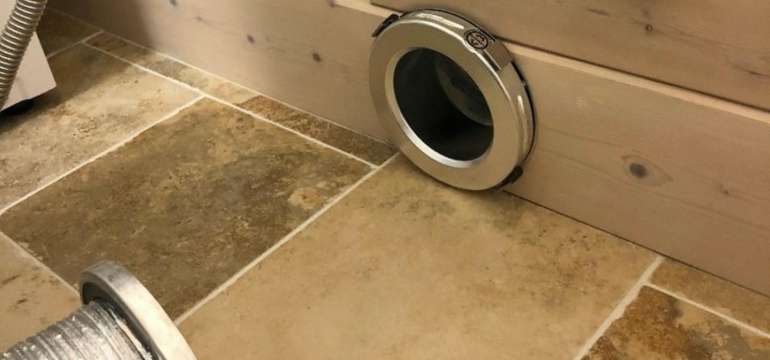
Dryer vents are designed to conduct hot air from one space to another. If there’s an existing dryer vent in or near the room you’re trying to cool off, you may be able to piggyback onto it and use it as a channel to get hot air siphoned away from the hot, windowless room.
However, there are several additional factors to consider if you’re thinking of using a dryer vent as a hot air conduit for a portable AC unit. First of all, dryer vents are typically smaller than the vents used for AC units. So if your dryer vent hose is too small, your AC unit might not be able to purge the hot air effectively, and you might end up spending electricity to run a unit that is simply not cooling the space the way it is supposed to.
Another consideration is the dryer itself. Your dryer must be able to rid itself of excess hot air, or that heat can build up and become a fire hazard. If you plan to hook your AC unit into an existing dryer vent, you need to be willing to constantly monitor the dryer and the air conditioner to ensure that both of those units continue to operate safely and efficiently.
Vent Through a Sliding Door
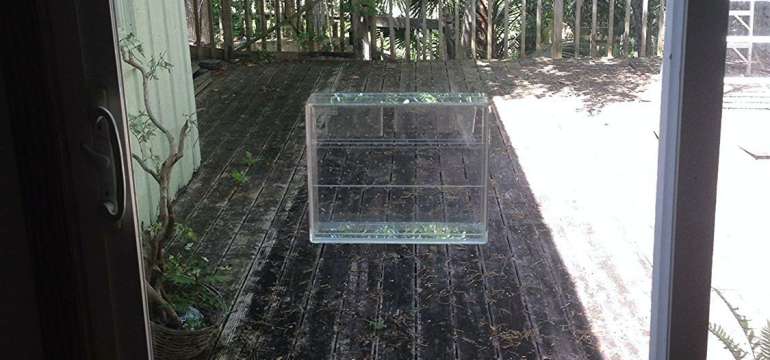
You may have ruled out the possibility of venting your air conditioner outdoors if the room in question only has a sliding door. However, using this space to vent your portable AC unit is still possible.
First of all, you need to determine how many inches you need to borrow from your sliding door. You need to have enough width to accommodate the width of the AC unit vent hose. Some portable AC units come with sliding window/sliding door kits, designed to help you adapt your sliding door area for a vent hose.
Slide your sliding door back far enough to allow for the vent hose. Let’s say that the vent hose is five inches in diameter. You’ll need a space of 6-7 inches. Push the door ajar so that you have a seven-inch space to work with. From this point on, your sliding door’s new closing point will be that 7-inch mark.
Using the provided vertical panels in your kit, place the vent hose in the gap of your sliding door. If your provided panels don’t reach all the way up to the top, fill in the remaining space with wood (painted to match your walls) or plexiglass.
Make sure to use weather stripping, insulation, and sealant to ensure that this new panel along the edge of your sliding door has the best possible seal. You don’t want cracks where air and moisture can seep through. Ideally, you’d use a rubber strip along the edge of the new panels, to allow the door to close tightly with a good seal.
Depending on the way you decide to install the vent and the vertical panels, you should still be able to use the sliding glass door to go in and out, although you may or may not be able to use a screen across that space.
Once the vent hose and panels are installed, the sliding door will no longer be able to latch and lock as it once did—but you can insert an adjustable security bar or a sturdy piece of wood in the space right behind the sliding door, along its track. This bar or wooden dowel will prevent the door from being pushed back from anyone on the outside. To slide the door open from the inside, remove the wooden dowel or security bar from the sliding track and pull on the door handle.
Vent Through a Chimney
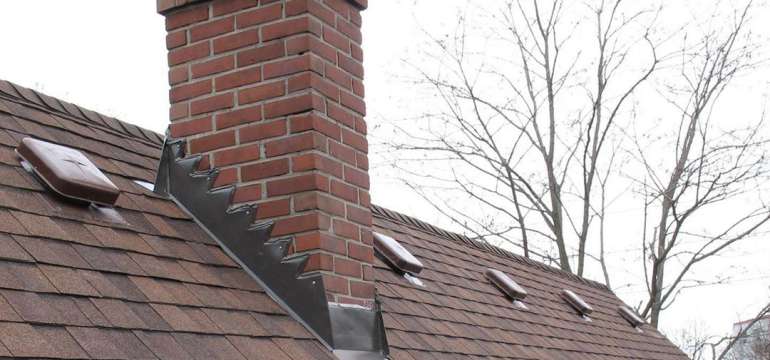
There’s one more way that you can vent a portable AC unit and get rid of that hot air in a windowless room. You can pipe the hot air out through a chimney. However, it absolutely must be an unused chimney in an unused fireplace. Never try to vent a portable AC unit through a functional, working chimney or fireplace—that’s a huge safety risk.
If you never use the fireplace or chimney, feel free to install the portable AC unit right underneath the chimney or inside the fireplace. Affix the vent hose to the wall of the chimney. You may want to extend the hose to pipe all that hot air further up the chimney, so it gets clear of your home’s environment faster.
It’s a good idea to seal off the remaining space inside the chimney, around the vent hose. The hot air will naturally rise and dissipate, but it’s better for efficiency’s sake to close off the extra space so warm air, and moisture don’t enter your house that way.
Before you vent an AC unit up a chimney, especially one that hasn’t been used for a long time, it’s a good idea to have an inspection done to ensure that the chimney is clear and open. Since chimneys are designed to vent hot air, venting AC up a chimney can be a great idea even for a room that does have windows.
Other Ways to Cool a Room Without Windows
What if none of these venting options work out for you? What can you do to cool down a room with no windows? There are a few different strategies you can try to lower the temperature of a room with no windows and no climate control options.
Install Extra Fans
A fan doesn’t necessarily introduce cooler air into a room, but it can definitely make the heat of a room less oppressive. To maximize the cooling sensation throughout the space, angle one-floor fan toward the ceiling. Aim a second fan at the door. The first fan will swirl away the hot air near the ceiling, while the second one forces warm air out of the room.
This works even better if you have an actual ceiling fan in play, so if there’s a room in your home that is windowless and perpetually hot, consider installing a ceiling fan.
Use Evaporative Coolers
Evaporative coolers are essentially portable fans that incorporate a tank full of ice. As the cooler’s fan runs, the ice allows the release of chilly mist into the room.
If you don’t want to buy an evaporative cooler, you can make your own by setting a bowl or tray of ice directly in front of an electric fan. The currents of air from the fan will blow the cooler air from the ice further into the room.
While this option may provide a cooling experience, it can also increase the humidity level in the room; so if you use it too often without proper ventilation or airflow through the space, you may eventually have mold issues.
Minimize Energy Usage
The more electricity is used within a space, the more heat is typically generated. Overhead lights, lamps, computers, ovens, TVs, and even small appliances give off heat when they’re in use or just plugged in. To minimize the heat level in a room, use as few electronics or electric items as possible within the space.
If you have to remain in a hot room for a long period of time, do your best to keep your own body temperature down by consuming cold beverages or applying ice packs to different areas of your body. Suck on ice chips, dress in very light clothing, and minimize physical activity so you can stay cool.
- What to Do if Your House Smells Like Gas but There’s No Leak - February 6, 2023
- Why Is There a Burning Smell Coming From My Vents? - August 16, 2022
- How to Remove the Musty Smell From Your Air Conditioner - August 16, 2022

David
Friday 2nd of June 2023
Hi - Can the exhaust air from a portable A/C used in my garage be vented through the floor drain? Thanks, David